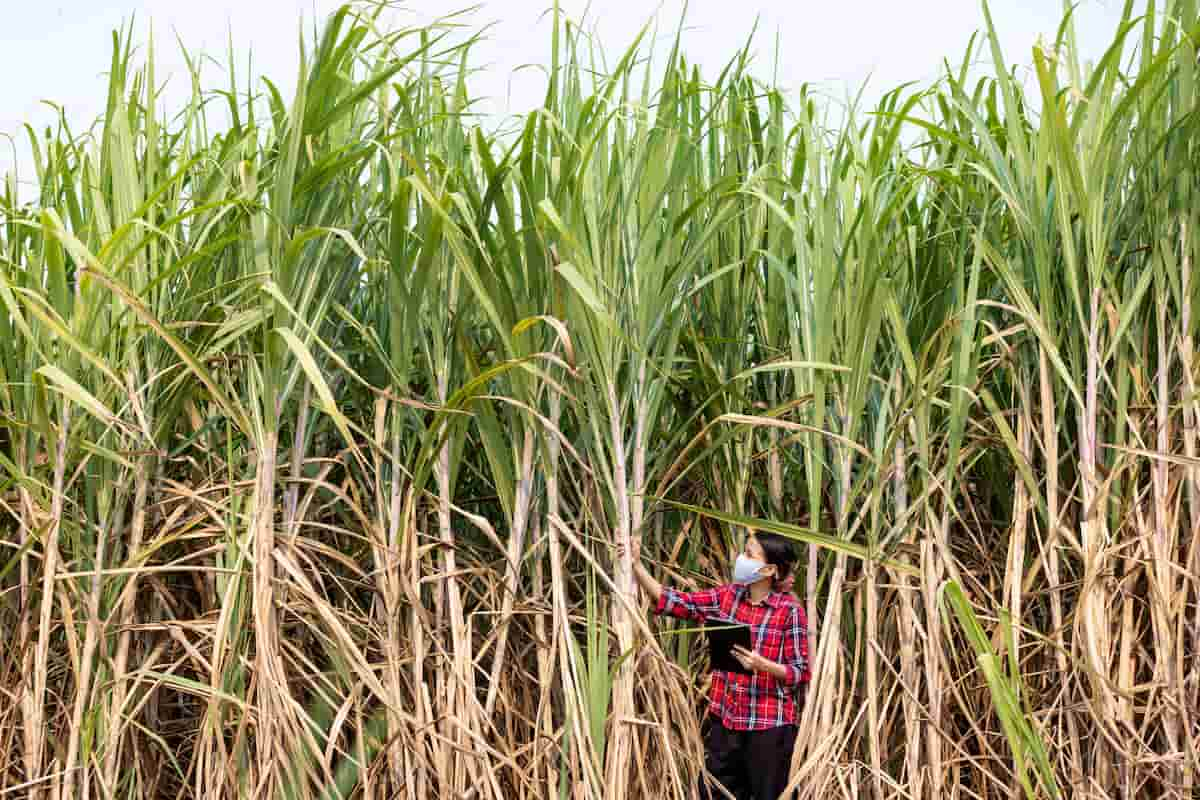Nematodes are microscopic worms capable of causing serious damage to sugarcane crops. The root lesion nematode (RLN) and the root-knot nematode are the two species that cause the most damage to Sugarcane. (RKN). High populations of other nematodes, such as dagger and spiral nematodes, can also harm Sugarcane.

PPNs are present in every cane field, with at least five different species likely to be found. The species and abundance of nematodes will vary based on soil type, climate, and crop history. RKN is more prevalent in infertile soils, whereas lesion nematodes can be found in all sugarcane-growing regions. Nematode management is essential for protecting sugarcane plantations. The use of resistant cultivars, crop rotation, and soil amendments are included.
Nematode Management in Sugarcane
Types of Nematodes that Affect Sugarcane
Several species of nematodes can be found in the soil of sugarcane fields. Still, only four are specifically destructive to sugarcane crops. Among these are the lesion nematode, the lance nematode, the root-knot nematode, and the reniform nematode.
- Pratylenchus coffeae, the lesion nematode, is a migratory endoparasite that deposits eggs in both soil and roots. This nematode harms Sugarcane by feeding on the root system, causing plant injury and yield reduction.
- Hoplolaimus indicus, the lance nematode, is an ectoparasite resistant to high temperatures and arid soil conditions. It is readily detectable through soil sampling and can cause substantial harm to sugarcane crops.
- Meloidogyne spp. is an obligatory endoparasite that completes most of its life cycle within the roots of its host. This nematode can cause significant damage to sugarcane crops because its eggs and second-stage larvae can persist in the soil.
- Rotylenchulus reniformis, a species of reniform nematode, is a semi-endoparasitic species that invades the root cortex, establishes a persistent feeding site, and becomes immobile. This nematode can cause substantial root system damage to sugarcane crops, reducing yields and impacting overall plant health.
Life Cycle of Nematode
Nematode life cycles consist of eggs, larvae, and adults. Adult female worms deposit their eggs in the host. The eggs hatch into L1 larvae, which endure four molts before maturing into juvenile adults. (L2-L4). The final molt releases the larval adult, which develops into the adult worm. The cycle is completed when adult males and females mate and the female produces eggs.
Factors Favoring Growth/ Causes of Nematode Spread in the Field
High soil moisture, warm temperatures, poor drainage, low soil fertility, and susceptible plant hosts can promote nematode development and spread in the field. Nematode proliferation can also be influenced by overcrowding and poor management.
Damage Symptoms of Nematode in Sugarcane
- One of the most prevalent symptoms is leaf yellowing, which initially appears as streaks and then extends to the entire leaf.
- This chlorosis is frequently accompanied by leaf margin and tip drying, especially in immature and ratoon crops.
- In extreme instances, chlorosis can cause crop stunting and decrease the number and size of internodes.
- The roots of infected plants are short and few. In addition, the affected area may be pale green to white.
- Nematode control is essential to sugarcane farming because these symptoms can significantly reduce crop yields.
In case you missed it: Mealybug Management in Sugarcane: Symptoms, Treatment, Chemical, Biological, Natural, and Organic Control

Impact of Nematode on Sugarcane Yield
Root-surface red lesions are common in RLN. Estimates of production losses in sugarcane crop range between 10% (Plant) and 7% in (Ratoon). These numbers are much larger in areas with abundant nematodes.
Cultural Management of Nematode in Sugarcane
- Cultural management practices can be effective in controlling nematode populations in sugarcane fields. Deep plowing can help to disrupt nematode habitats and reduce their population density.
- Solarisation, flooding, and crop rotation are also effective strategies. In wetland conditions, intercropping with plants like sun hemp, marigold, or daincha can help to reduce nematode populations.
- Applying organic manure such as press mud, poultry manure, or neem cake can help improve soil fertility and reduce nematode populations.
- These cultural management practices can be applied before the last plowing in lands to minimize nematode damage and increase sugarcane yields.
Biological Management of Nematode in Sugarcane
- Biocontrol agents such as Pochonia chlamydosporia, Paecilomyces lilacinus, Trichoderma viride, and Pseudomonas fluorescence are utilized in the biological management of nematodes in Sugarcane.
- These agents can be applied at planting time, mixed with moist FYM or cured press mud, and disseminated uniformly across the field.
- The biocontrol agents assist in suppressing the populations of plant-parasitic nematodes, thereby reducing their injury to the sugarcane crop.
- This method is eco-friendly and does not involve the use of dangerous chemicals. In addition, it can be an effective long-term method for managing nematodes in sugarcane fields.
Chemical Management of Nematode in Sugarcane
Nematicides like carbofuran 3G or cartap control sugarcane nematode chemically. These chemicals can control Nematode numbers at planting or two months later. However, nematicides can harm the ecosystem and non-target organisms and may not benefit most farmers. Soil fumigants like dazomet are efficient but expensive.
Organic Management of Nematode in Sugarcane
Nematode population control in Sugarcane can be achieved through organic methods. One approach is using biological control agents such as Nematophora gypsophila and Verticillium chlamydosporium. These fungi have been linked to the suppression and reduction of nematodes in cereal crops. In addition, introducing marigold (Tagetes patula) and calendula (Calendula officinalis) extracts to the soil may help reduce nematode populations to some extent.
In case you missed it: White Grub Management in Sugarcane: Symptoms, Treatment, Chemical, Biological, Natural, and Organic Control

Preventive Measures for Control of Nematode
Controlling nematode numbers requires prevention. Nematode-resistant can lessen vulnerability. Marigold or calendula intercropping or flower strips between crops can limit nematode numbers. Solarization or plastic mulching seedbeds can kill worms. Heavy infestations may require a bare fallow period of several months. Nematode numbers can be reduced by multi-year crop rotation. These methods can help control nematodes sustainably.
Conclusion
Sugarcane suffers substantial damage when controlling nematodes, leading to decreased production. The use of resistant cultivars, crop rotation, biological and chemical control, and natural and organic management techniques are all components of disease control and management.
- Beneficial Insects in Pest Management
- Natural Solutions for Pest Control in Flower Gardens
- Types of Fungicides Used in Agriculture
- Common Issues in the Fruit Development Stage of Pomegranate Farming
- Fruit Development Issues in Papaya: Easy Solutions and Treatment
- Soil-Borne Diseases and How to Protect Your Plants
- Practices to Prevent Disease Spread in the Garden
- From Wilted to Thriving: How to Treat Root Rot Naturally in Houseplants
- Natural Remedies to Cure Brown Spots on Fig Tree Leaves